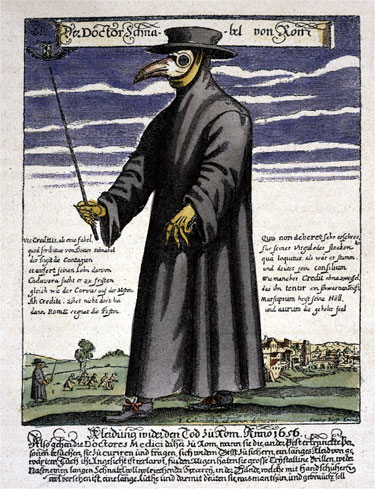
The Salvia River in Enköping, Sweden. Photo by Lars Forslin for Natur & Trädgård. A beautiful expanse of Salvias – ‘Caradonna’, ‘Rügen’, ‘Blauhügel’, and ‘Ostfriesland’.
Lamiaceae, or the Mint family, contains the majority of the species we usually consider culinary plants, and include in our kitchen gardens. An older name for this group was ‘Labiatae’ which referred to how its petals were usually fused together in an upper and lower ‘lip’. ‘Labium’ is Latin for lip.
By far, the largest genera within this group is that of ‘Salvia’, which currently clocks in at about 900 species, but can probably be expected to keep growing. Many of them are stunning, especially en masse, but I’m going to focus this post on the ones we eat – Salvia officinalis. They have a fascinating history and occupy an important place in our culture, both as a medicinal cure-all, and magically in folklore.

The leaves of Salvia officinalis ‘Purpurascense’ – the leaves of which I used in the soup recipe at the end of this post.
Extending back in time far longer than history has been recorded, this plant has been grown and valued for its medicinal properties. The Greek Theophrastus studied with both Plato and Aristotle. Before Aristotle died, he named Theophrastus his successor at the Lyceum – a post he held for 36 years. The main focus of his study was plants, and as a result he is often considered the “father of Botany”. He identified both a wild and a cultivated variety of sage. 300 years later, Pliny the Elder informed us that the Romans called the cultivated sort ‘Salvia’ – a name with a root in the Latin verb Salvare, (think of the English word Salvation), reflecting its many healing attributes. The Roman name stuck, and at the end of the 700’s AD, the Holy Roman Emperor Charlemagne pushed for its cultivation throughout the empire. Monasteries were centers of learning and bastions of herbology and medicine throughout the Middle Ages. Salvia has been a staple in monastery gardens ever since.. The storeroom, in which all the harvested medicinal herbs were stored at the monastery, was called the “Officina”. In 1753, the Swedish botanist Carl von Linné (Carl Linneus) added the epithet ‘officinalis’. Now you know why.

An excerpt from ‘Abregé de tout la médecine practique’ – a book of medical formulas published in 1741, which contains several versions of the famed Vinaigre des Voleurs.
Salvia officinalis was reportedly one of the main ingredients in Vinaigre des Quatre Voleurs, or Four Thieves Vinegar, a concoction which was probably the world’s first hand sanitizer equivalent. It was supposed to ward off the Bubonic Plague which hit Europe in the middle of the 1300’s. As with anything with origins that far back in time there are numerous versions, and it is impossible to verify which is the original recipe, but here is one excerpt – taken from Wikipedia:
“The following vinegar recipe hung in the Museum of Paris in 1937, and is said to have been an original copy of the recipe posted on the walls of Marseilles during an episode of the plague:
Take three pints of strong white wine vinegar, add a handful of each of wormwood, meadowsweet, wild marjoram and sage, fifty cloves, two ounces of campanula roots, two ounces of angelic, rosemary and horehound and three large measures of champhor. Place the mixture in a container for fifteen days, strain and express then bottle. Use by rubbing it on the hands, ears and temples from time to time when approaching a plague victim.”

The “beak” contained an assortment of potent herbs – partially to ward off the disease, but also to mask the stench. Image courtesy of looking4thetruth77.blogspot.com.
In one of several legends behind the Four Thieves, the four had been caught stealing. Their penalty was the dreaded and highly risky job of burying the dead. So, in an attempt to come out of the ordeal alive, the resourceful thieves developed the vinegar using the most potent of herbs to shield them. A similar application of the medicinal power of herbs can be seen in some of the imagery we know from the medieval days of the Black Death epidemic. The creepy-looking beak-like bird masks of the Plague doctors were stuffed full of herbs, partially to ward off smells, but no doubt also to preserve their health. Sage is one of the four essential herbs – along with parsley, rosemary and thyme.
Through the ages, sage has been useful in securing love. A medieval tip has you poke three holes in a sage leaf, and thread one of your own hairs, along with that of your beloved’s through the holes, and then bury the leaf under the loved one’s threshold. This would guarantee eternal love and devotion. In a similar version aimed at gaining the same end result, you instead take three sage leaves. On one, you write Adam and Eve, on the second Jesus and Mary, and on the third your own name. Then, out of sight of anyone, you burn the three leaves. Collect the ashes, and stir them into the food or drink of the object of your passion. No doubt, completely fool proof! However – a word of caution… Do not plant your own sage bush – it will bring bad luck. Have a friend do it for you. It is also recommended that at least one other plant be present in your garden – or it will not protect your health! Finally, medieval lore has it that a miserable looking sage plant is a tell-tale sign of poverty and misery. Healthy, thriving plants however, would indicate the opposite – your family is happy and well to-do!

Le Comte Saint Germain – a mysterious gentleman with an amazing store of knowledge, which swept the French court off its feet for a period of a decade beginning in 1750. Voltaire, who was certain he was an imposter referred to him as ‘the Wonder Man”.
Around 1750, a distinguished gentleman of wealth and fine education descended upon the French court. He introduced himself as le Comte de Saint Germaine, and dazzled the jaded court with his brilliance and his outrageous tales. He was a polyglot, well versed in both Arts and Sciences, dabbled in alchemy, and was an excellent violinist. However, what his contemporaries found most intriguing was that he boasted to have unlocked the secret to eternal life. Although he looked to be a man in his best years, he claimed to be over 300 years old, and was in possession of a “life elixir” – the recipe for which he had obtained on one of his many travels through India. He sold the recipe at a hefty price to several foreign governments – among others to Denmark. Among other herbs, his concoction contained sage. For over a hundred years, ‘St. Germaine tea’ was the primary universal medicine used in both Norway and Denmark. In Swedish pharmacies, it was sold under the name of ‘Species St. Germain’ through 1949. This is not all that strange considering all its medical properties – sage is a veritable super-herb! According to Wikipedia: “Modern evidence shows possible uses as an antisweating agent, antibiotic, antifungal, astringent, antispasmodic, estrogenic, hypoglycemic, and tonic.” It has also proven effective in managing mild to moderate Alzheimer symptoms, and is useful in reducing lipids and lipoproteins in the blood. Despite the many benefits of sage that have been discovered – and that the Comte most definitely knew – there are probably countless more compounds that have not yet been pin-pointed by Science, especially when combined with other foods.
Although his admirers – including Voltaire, Casanova, and Lord Walpole – suspected he was a charlatan and a quack, their suspicions were never substantiated, and the mystery surrounding le Comte remain to this day. He was reportedly never seen neither eating or drinking in public – yet he leaves behind a soup named after him – Potage de Saint Germain. Not surprisingly, it contains lots of sage. I made it the other day, and it was thick, creamy and absolutely delicious! Life elixir, indeed!
Potage de Saint Germain
2 bags of frozen green peas
1 slice of bacon
barely a cup of finely cubed carrots (= 2 deciliters)
1 large, chopped onion
1 tablespoon dried thyme
a handful fresh sage leaves
Add just enough water to cover the vegetables, and boil on low heat until soft. Mix until smooth. Add bouillion (cube is fine), a splash of sherry, and 2 deciliters (almost one cup) heavy cream. I threw in some parsley too, because I needed to use it – figuring it couldn’t hurt. It didn’t. Exquisite!








That is an absolutely fascinating history, thanks for all the research. Now if only salvia would grow in my garden.
Thanks Carolyn – yes, it is definitely a sun lover… 🙂
Anna, you have out done yourself, this is a magnificent piece of informative writing. I congratulate you, I enjoyed every word! I will post this to my I Love Robins blog site. Kudus young lady! N.
Thanks Nancy! It gives you a whole other appreciation for this humble plant, doesn’t it? I found it fascinating too! Just kept reading and reading…
So history CAN be fun! Now for some of that soup!
Aw – you HAVE to try it! Soooo good!!! It’s only been a few days, but I’m about to make it again. It truly is a keeper!
Thanks for the multi-faceted post!
You’re welcome! 🙂
Pingback: Wednesday Vignette – The Great Equalizer | Flutter & Hum